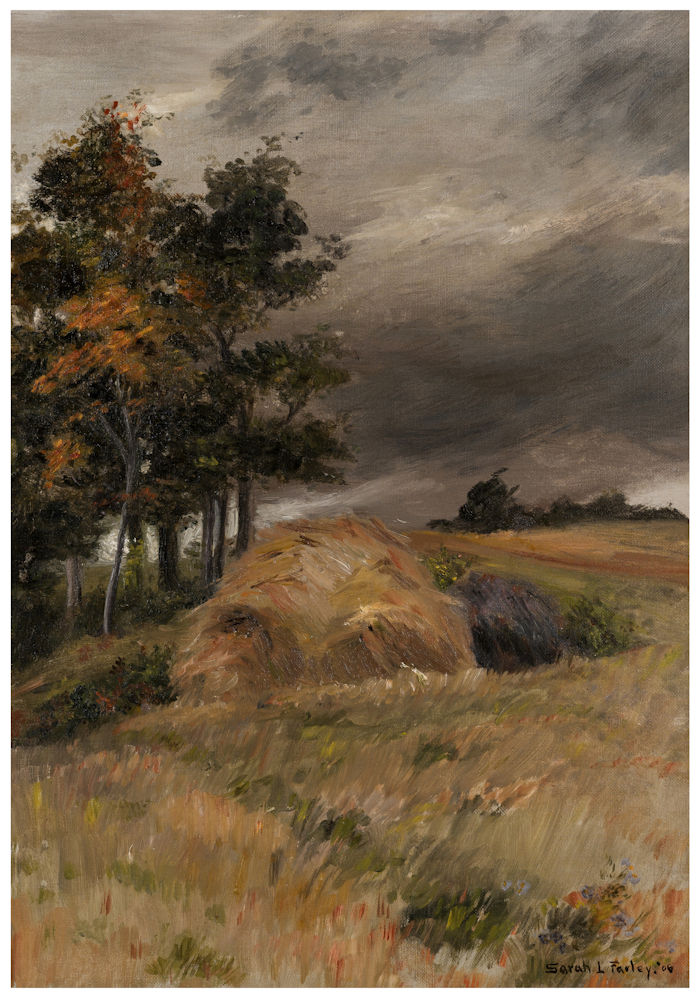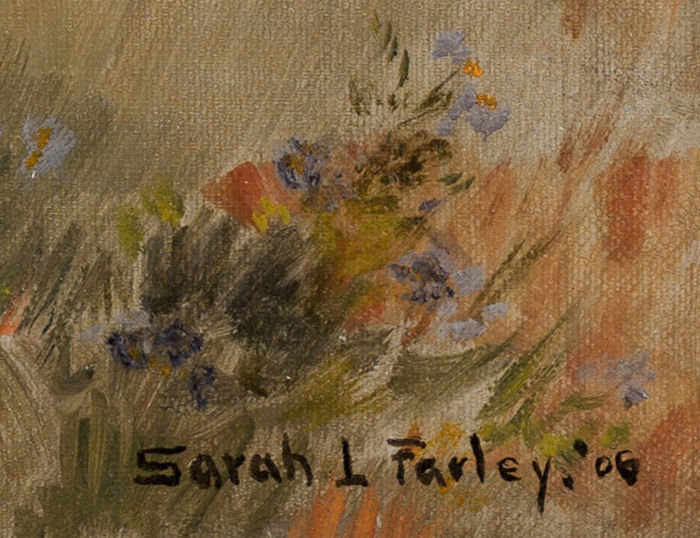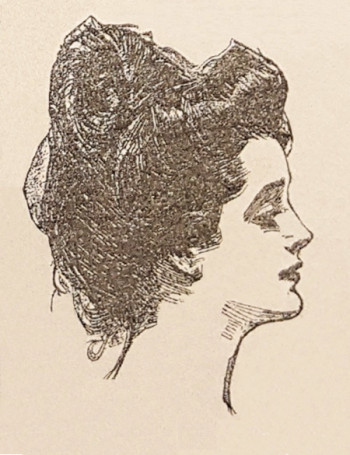
Photo of painting
by John Hauschildt, Rum Doodle Studios, Newmarket, NH.
© 2020

|
Sarah
Leona Farley. Landscape in oil. 1906. 14 x 20”. Owner: Sarah Allan Krycki, granddaughter of the
artist.
As a
student at the Art Students League in New York City from 1897
to 1900, Sarah
Farley-Allan learned
landscape painting from two of the leading artists in the United
States: Kenyon Cox (1856 – 1919) and
John Henry Twachtman (1853 –1902).
American
Tonalism flourished
between 1880 and 1915,
overlapping Sarah’s years in art school. Impressionism followed.
The tonalist style originated in France in
the Barbizon School,
with its emphasis on tone, shadow, soft forms and loose brushwork, and evolved in America
through the work of James
McNeill Whistler, George Inness, Thomas
Wilmer Dewing, John Twachtman and
others.
John Twachtman taught Farley-Allan tonalist painting
in the classroom. Kenyon Cox was her primary mentor
during and after
art school. He taught her illustration, sculpture and painting.
According
to an Allan family member, Cox also traveled to Jermyn, PA, to
work with
Sarah. The woods and farms around Jermyn, Mayfield and other
towns
provided ideal settings for teaching landscape painting in a
tonalist style.
This oil
painting (untitled) is a rare view of Farley-Allan’s
extraordinary expertise in another medium and genre. Created
in 1906, it
was likely shown at a YMCA exhibition in October. According to The
Scranton Truth: “The display includes some of the finest
creations of the
foremost modern artists…Among the paintings of Scranton artists are
canvasses
by John Willard Raught, Miss Jennie Brownscombe and
Miss Sarah L. Farley”
(October 18, 1906, pg. 11).
Reflecting
common qualities
of tonalist paintings, Farley-Allan’s
landscape is spatially narrow in focus; the lines of trees, bushes, a
haystack,
dried grass and wild flowers are soft-edged and blurred; the scene is
colored in
muted earth tones of brown, gray, orange, red and green; the sky is a
billowing
mixture of light and dark grays. Sarah skillfully captured
the energy of
an approaching storm. It’s early fall, late in the day. The whole scene
is in
motion…ominous, enveloping clouds, and wind-bent trees and
grass. At the
center of the sloping landscape is a haystack, parted by the wind, and
a patch
of plowed earth in the background, remnants of a farmer’s harvest
labor. There
is no sign of human or animal life.
Landscape
artist, Robert Bissett, describes
a tonalist painting as “an intriguing visual poem…in
which there is
no effort to communicate a message or a story.”
To art
historian, David Adams Cleveland, “there is a spiritual
dimension inherent in Tonalism… it is an art for the
contemplative spirit,
a balm for body and soul."
Farley-Allan’s
painting stirs the senses and emotions of the viewer; it
blends the natural and the spiritual, the physical and the metaphysical.
Photo of painting by John
Hauschildt, Rum Doodle Studios, Newmarket, NH. Copyright 2020.
Bottom left is an enlargement of the signature and date ('06) from the
painting above left. |

 Lackawanna
County, Pennsylvania, USGenWeb
Lackawanna
County, Pennsylvania, USGenWeb

